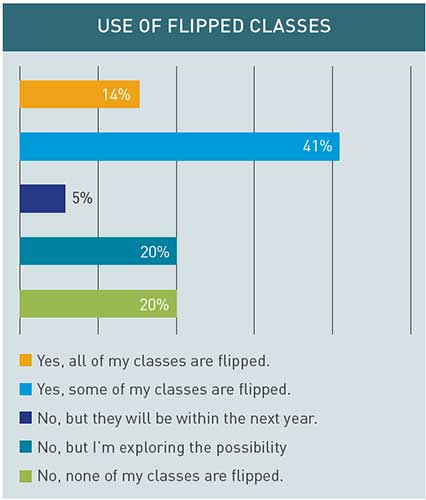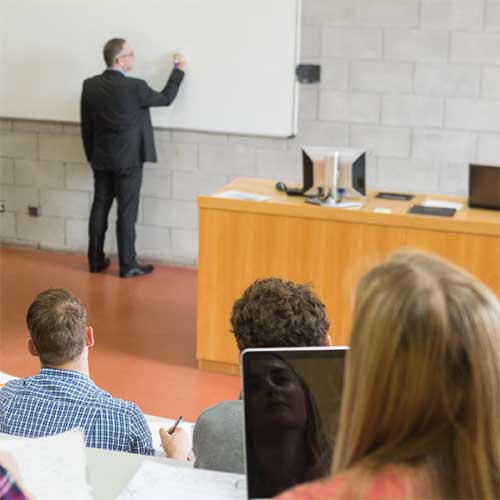Posted on 7/23/2019 by Legrand AV Team
Tools brought on by new technology not only affect our personal lives, but also our lives in the classroom. These new tools are advancing classroom life by allowing students to annotate slides, capture notes, record lectures, watch supplemental videos, participate in surveys and answer polls.
Since new technology is available, new study methods are also available. 85% of students use a mobile device to study, up 40% since 2013. Beyond helping with studying, 62% of students feel that technology helps them prepare for class. 77% of students claimed that adaptive technology helped them improve their grades. Educators took notice and have adjusted their teaching methods to take advantage of these improvements. The result: a new, collaborative approach to teaching was created to better match how the human mind learns.

When students are cognitively engaged, eliciting meaningful relationships between ideas, generating connections, asking questions and providing solutions, they have a higher retention rate as opposed to listening to passive recordings or getting information from a textbook. In 2014, a study in the Proceedings of the National Academy of Sciences of the United States of America found that the failure rate for a traditional lecture had increased 55% compared to the rates received from classrooms initiating active learning.
Classroom learning is also being adjusted because many faculty members are adjusting their lessons to blended or flipped learning. Blended learning involves face-to-face and online teaching to provide a comprehensive learning experience. Flipped learning, also known as flipped classroom, is when content delivery occurs outside of class time and in-class time is used for discussion or activities related to the outside of class content. According to Campus Technology’s Teaching and Technology poll, 55% of faculty are using the flipped classroom model and 75% are blending their lessons to some extent as of October 2016.

Since classrooms are moving towards online learning trends, it is important that learning spaces adapt. Collaborative classrooms, lecture halls, distance learning rooms, and even huddle spaces are being integrated with AV technology designed to enhance collaboration between students and instructors. Inject success into the classroom design by learning more about today’s learning methods and how AV can help.
For more on AV and education, visit Legrand | AV's Education Solutions page, your one-stop-shop for resources from across the brands of Legrand | AV to help guide design and suggest solutions to enhance learning environments.
Related News
 Collaborative classrooms need adaptable technology and furniture to adjust to the needs of any given day. Find out how.
Collaborative classrooms need adaptable technology and furniture to adjust to the needs of any given day. Find out how. Make lecture halls more engaging with today’s AV technology.
Make lecture halls more engaging with today’s AV technology. Robert Gag, CEO of audiovisual integrator Tierney, talks about working with Legrand | AV.
Robert Gag, CEO of audiovisual integrator Tierney, talks about working with Legrand | AV. AV University has been open for four months. Here’s how it’s going.
AV University has been open for four months. Here’s how it’s going.

 All News
All News